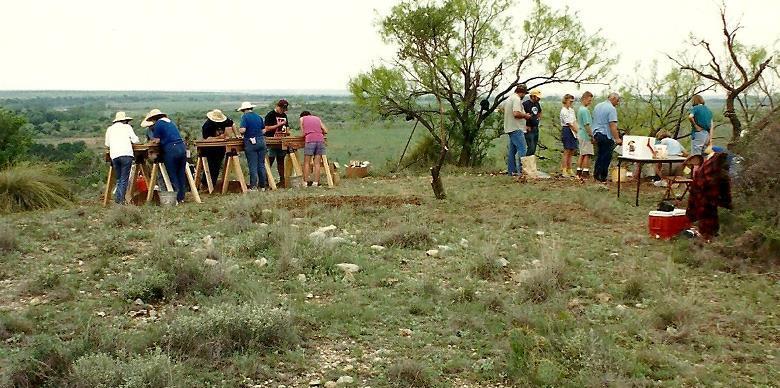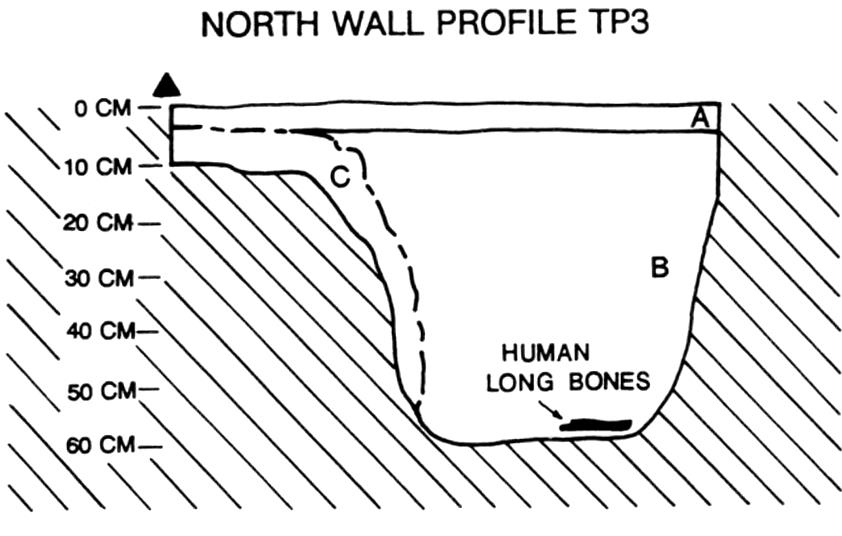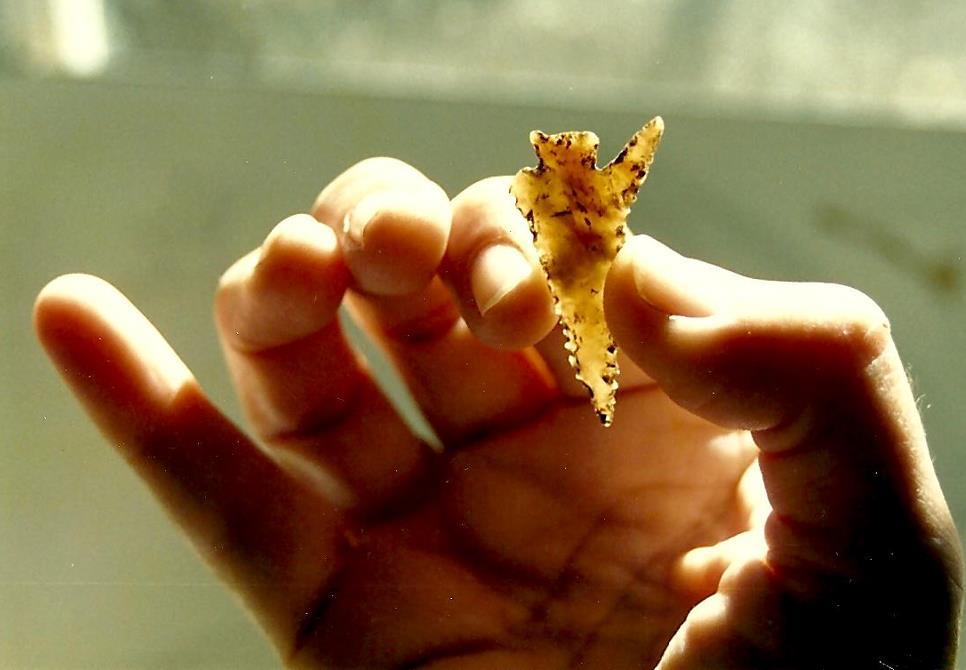Site 41CN94 is situated high on a limestone bluff overlooking the Colorado River below its confluence with the Concho. Three rock cairns and a large tool-stone procurement area were identified in this locality during survey by Mariah and Associates prior to impoundment of the O. H. Ivie Reservoir. Two of the cairn features, one of which contained remains of a possible cremation, had been vandalized.
Although the other cairn was found to contain a mostly intact burial, it was determined that it was located above the level of the future reservoir pool and thus outside of the mandated survey area. The Texas Historical Commission contacted volunteers from the Concho Valley Archeological Society to remove the burial before further vandalization could occur.
Excavations were conducted in 10-cm levels within a 2 x 2 meter unit. The crew encountered numerous chert flakes and animal bone in the first two levels. A possible Perdiz arrow point preform was uncovered in Level 1, and a fragment of a triangular arrow point in Level 2. At the bottom of Level 2, excavators reached the burial pit, an elliptical area that had been dug into sandstone bedrock. Beneath this level, excavators encountered layers of large flat rocks that had served as the grave covering.
Disarticulated human remains were first encountered in Level 5 along with a Sabinal-like arrow point. The bones apparently had been fractured by the weight of the overburden, and it was not possible to determined if the burial had been primary or secondary (removed from another location).
Analysis conducted by Joe Powell at Texas A&M University found the individual to be male, approximately 20 to 30 years of age. He had been relatively tall in stature (between 5 feet 6 inches and 5 feet 8 inches), compared to most central Texas hunter-gatherers, with considerable muscularity in the lower body . A suite of dental anomalies was noted, suggesting “improper development of teeth occluded during tooth differentiation in utero, either from a genetic or extragenetic source.” Other than minor peridontal disease, the individual had not suffered from skeletal disorders.
The Sabinal-like arrow point was recovered from the burial at the level of the long bones. The point had an expanding stem and finely serrated blade edges and was missing one of its barbs. According to archeologist Andy Cloud, the lithic material appeared to be Edwards chert.
The triangular arrow point fragment and possible Perdiz preform were recovered as the initial fill was removed, and it was unclear if these were related to the burial itself. Along with the numerous chert flakes, they may have been scraped into the burial from the surface as the pit was being filled. The arrow point fragment was thin, and bifacially flaked, with a short and square to bulbous stem. The preform was crude, having been unifacially flaked on a blade with a short narrow stem. Technologically,it appeared to be related to the Perdiz point of Late Prehistoric II times.
|

Volunteers from the Concho Valley Archeological Society conducted excavations to recover the burial before it was destroyed. Photo by Larry Riemenschneider.  |

Burial pit, as depicted by archeologists from Mariah and Associates. Graphic from Lintz and O�Neill 1993 (Figure 4.3).  |

Sabinal-like arrow point recovered from burial at level of long bones. Photo by Larry Riemenschneider.  |
|